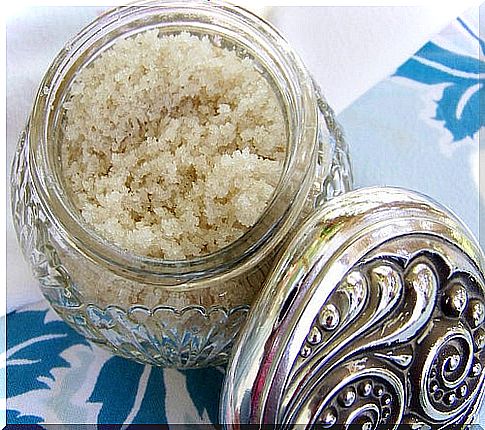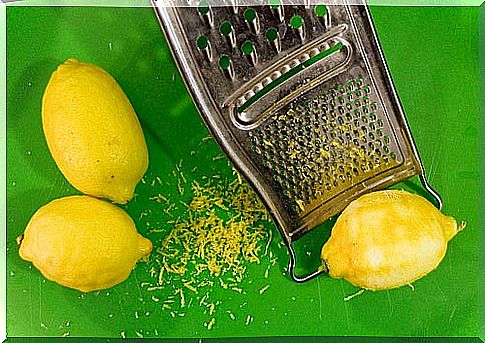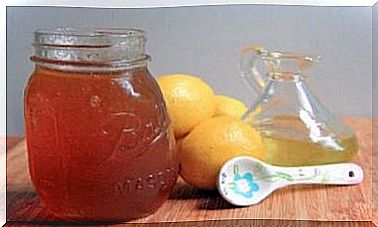How To Do A Homemade Peel
If you have sensitive skin, you can allow more time to pass between exfoliations, and only do one per month. Remember to hydrate your skin well afterwards.

Peeling is an exfoliation of the surface layer of the skin. Indeed, it is carried out in order to eliminate the dead cells which accumulate there and which make the skin dull. In fact, we lose more than 30,000 dead skin cells every day.
We show you some recipes below so that you can prepare the best homemade peels. These recipes are at the same time original, aromatic, natural and very effective.
The benefits of peeling
- It is used to prevent and remove stains.
- Also makes the skin naturally luminous.
- Also facilitates the appearance of new cells.
- Also stimulates the production of collagen.
- It improves blood circulation.
- Also helps to delay the appearance of wrinkles and sagging skin.
- Makes the skin softer.
- Finally, it is used to rid the skin of its toxins and to oxygenate it.
How is a peel performed?
Apply a little exfoliating cream to the still damp skin after cleansing. Then, do a light concentric massage over the entire surface to be treated, avoiding sensitive areas such as the eye area.
If you are doing the peel on the thighs or buttocks, etc., then you can apply a little more pressure. You need to massage to activate circulation until you feel the effects. Leave the product on for one or two minutes then rinse with water.
Your skin will be perfectly hydrated thanks to the oils contained in these homemade recipes. However, if you have dry skin, we recommend that you moisturize it again.

How often can the peels be performed?
It should not be abused because it is necessary to respect the natural process of cell regeneration. It is for this reason that we recommend doing only one per week or one every fortnight.
An exfoliating cream for dry skin
When you have dry skin, you should exfoliate gently and no more than once every two weeks.
This is why baking soda is the basic element of the recipe you are going to prepare, for its extremely fine texture and for its alkalizing function, ideal for skin and sensitive areas.
Thoroughly mix the baking soda with a little olive oil until the baking soda takes on the color of oil.
If the exfoliating cream is intended for mature skin, we recommend adding a few drops of rosehip or geranium essential oil to it. Both are used to regenerate the skin in depth.
An exfoliating cream for combination skin
The problem with combination skin comes from the fact that it has oily areas and dry areas, so it will also be necessary to perform a fairly gentle peel. You will just have to insist more on the exfoliation of the fatty areas which correspond to the T zone (forehead, nose, chin).
Also use baking soda, but in this case, mix it with a less dense oil like sweet almond oil or sesame oil.
In addition, you will add to the exfoliating cream an orange zest, preferably organic, which will give it a delicious aroma and multiply its therapeutic properties.
An exfoliating cream for oily skin
Oily skin needs a weekly peel to clean it thoroughly.
In this case, use sugar as the base of your exfoliating cream. Indeed, it is more granular than bicarbonate, and you will mix it with aloe vera gel, natural or already conditioned.
Also add a lemon zest and, if you have a few drops of lemon essential oil.

An exfoliating cream for acne-prone skin
Acne-prone skin needs to be treated with great delicacy since acne comes from small skin inflammations. However, at the same time they must be cleaned regularly to remove impurities.
Use baking soda mixed with aloe vera gel, a few drops of coconut oil, and a few drops of tea tree or palmarosa essential oil.
An exfoliating cream for the body
As the skin of the body is less sensitive than that of the face, you should perform a deeper peel to improve your circulation in areas such as the thighs, abdomen, buttocks or arms.
So use coarse salt as the base of the exfoliating cream, very suitable for massaging the body and for treating circulation problems, cellulite, stretch marks, etc.
Mix it with coconut oil and, possibly, with rosemary essential oil which will help you to activate your circulation even more.









